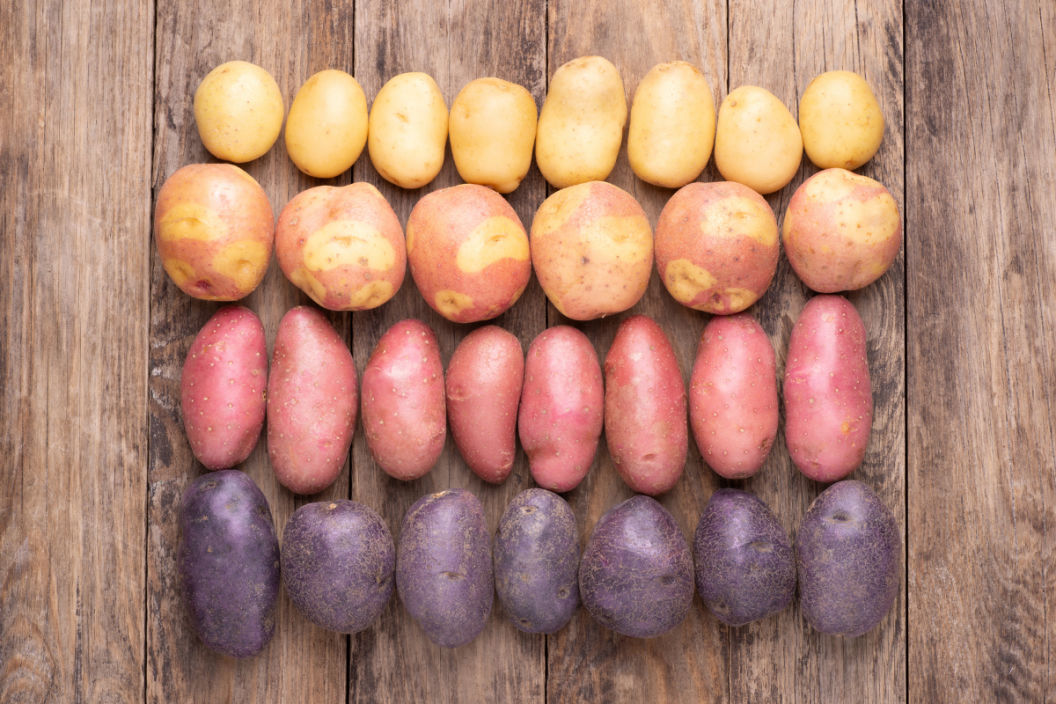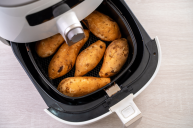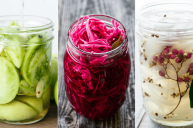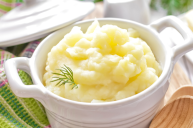We've all heard the sage advice: use starchy potatoes for mashed potatoes and waxy potatoes for potato salad. That's great, but if you're like me, you want to know the reasons behind the advice. What makes some types of potatoes better for certain potato dishes than others?
Videos by Wide Open Country
Some people simply make the potato recipe they're feeling in the moment, rather than paying attention to what each type is best for. Although it's hard to go wrong with potatoes, your recipes will never reach the level of deliciousness that they could if you used the potatoes best suited for the task. After all, no one wants their crispy potatoes to be too soft or their mashed potatoes to be too chunky.
As a former restaurant chef, I'm a self-proclaimed expert in potatoes. My restaurants went through 400 pounds of potatoes a week! A week! That's a lot of peeling, blanching, dicing, boiling, roasting, and frying. I learned some lessons the hard way, using the wrong type of potato for the wrong task. So let's dive in and look at each potato variety's strengths and weaknesses.
When it comes to varieties of potatoes, each has different sugar content, thin skin or thick skin, and flavor. Some are yellow potatoes, while others are white potatoes. Some have a buttery flavor while others are more floury, or turn out with a crispy brown skin. And let's not get started on sweet potatoes or yams.
Types of Potatoes: Starchy

Alton Brown says if it looks like Mr. Potato Head, it's probably the right choice for baked potatoes. Russet potatoes and Idaho potatoes fall into this category (and they do look a lot like my old childhood friend).
Starchy potatoes are low in moisture and high in starch. They break down easily when cooked, making them ideal for mashed potatoes. They're also super absorbent, which means they're going to take in all of that delicious butter and cream you throw at them. If you are looking for the perfect mashing spud, this is the variety of potatoes you want.
How do you know a potato is starchy from the other kinds of potato types? The white flesh or yellow flesh will coat your knife with a white, milky film when you cut into it.
When to Use Starchy Potatoes

Baked Potatoes: Bake the potatoes in a 375 degree F oven, pop them in the microwave, or toss them on the grill. Our recipe will have you making the best baked potatoes of your life in no time!
Mashed Potatoes: Boil the potatoes in large chunks until they are fork-tender. Mash 'em with an old-fashioned hand masher, or a rice mill. If you have the time, you can even make them in the slow cooker using this recipe.
Hasselback Potatoes: These impressive looking Hasselback potatoes side dish can be made with either starchy or waxy potatoes, but we love the way the butter and oil melt into starchy potato's fluffy interior. Yum!
Potato Pancakes (Latkes): Classic potato pancakes need a starchy potato that holds its shape while frying, leaving the inside a creamy and gorgeous melty pile of potato. The light yellow flesh also fries up to a beautiful golden brown as hash browns.
French Fries: The starch content of Russets or Idaho potatoes makes them an excellent candidate for french fries. So long as you blanch them before frying them (like in this recipe from Chowhound), they'll be soft on the inside and crunchy on the outside.
What to Watch for with Starchy Potatoes

Starchy potatoes break down really easily, making them a poor choice for potato salad or potatoes au gratin. They're great for soups when used to add body (especially in puréed soups like a great potato cheese soup), but they break down too much if the goal is to have chunks of potatoes.
While starchy potatoes are absolutely perfect for mashed potatoes, be careful not to overwork them in your potato recipes. Some types of potatoes become gummy and gluey when the starches are overworked, resulting in a sad, disappointing plate of mashers.
Types of Potatoes: Waxy

Waxy potatoes are characterized by a thin, papery skin that can be scratched off using your fingernail. Red skin potatoes, new potatoes, and fingerling potatoes all fall into this category.
These potatoes have a lower starch content and a waxy texture, so they hold their shape well as they cook. They have a creamy flesh that sort of melts in your mouth as you eat it. While they have more characteristic "potato" flavor than their starchy counterparts, they are well complemented by mayonnaise dressings, olive oil and rosemary, and mustard. Their firmer flesh is perfect for recipes that use chunkier potatoes because it won't fall apart at a high temperature.
When to Use Waxy Potatoes
Potato Salad: You can roast or boil potatoes for potato salad, but using a waxy variety of potatoes like red bliss or French fingerlings will guarantee the potatoes' firm texture won't fall apart when you bring the ingredients together. This recipe is sure to make you appreciate everything the red potato brings to the table!
Soup: Since waxy potatoes hold their structure well, they stay together when simmered in soup. They absorb the cooking liquid well without breaking down, making them perfect for a hearty leek and potato soup.
Scalloped Potatoes: Waxy potatoes are perfect for scalloped potatoes as the slices hold their shape throughout the cooking process. They're rich, they're decadent, and this recipe from Gimme Some Oven might become a staple in every holiday meal from here on out!
What to Watch for with Waxy Potatoes

Waxy potatoes can become dense and heavy when baked. This is perfect for scalloped potatoes or potato casserole, but they won't become fluffy and light, making them less than ideal for use as a traditional baked potato.
They also have a tendency to become gummy and gluey when mashed, so never use them for mashed potatoes.
Types of Potatoes: All-Purpose

All-purpose potatoes are exactly what they sound like: good for almost every use! Yukon Gold, blue, and purple potatoes fall in this category. They're semi-starchy, semi-waxy potatoes that bake well, roast well, and boil well.
When to Use All-Purpose Potatoes
Roasted Potatoes - These potatoes are simple, celebrating the flavor of potatoes as it cooks with complimentary flavors of rosemary and garlic. This recipe from Serious Eats uses duck fat, making it particularly decadent, but you can use olive oil, too.
Gnocchi - These little dumplings are like perfect little pillows. Yukon Gold potatoes make especially good gnocchi, with enough starch to help limit the amount of flour required to hold them together. This recipe from Food & Wine is a perfect introduction to your first from-scratch gnocchi.
What to Watch for with All-Purpose Potatoes

All-purpose potatoes work for most dishes, but be aware that they are neither a starchy or waxy potato. We prefer making mashed potatoes with a starchy variety, and scalloped potatoes with a waxy variety. The all-purpose potatoes don't have enough of either type to make it the best choice for these dishes. Other than that, an all-purpose variety should work well enough! It's all in the types of potatoes you choose at the grocery store.
Want more details? Check out the handy chart above from our friends at The Kitchn.




